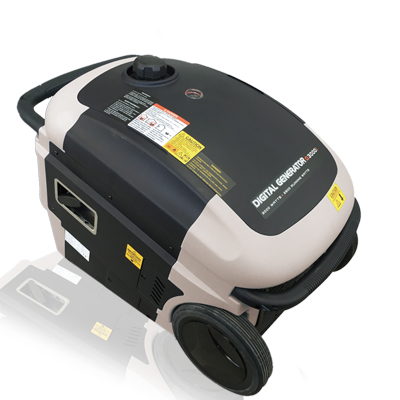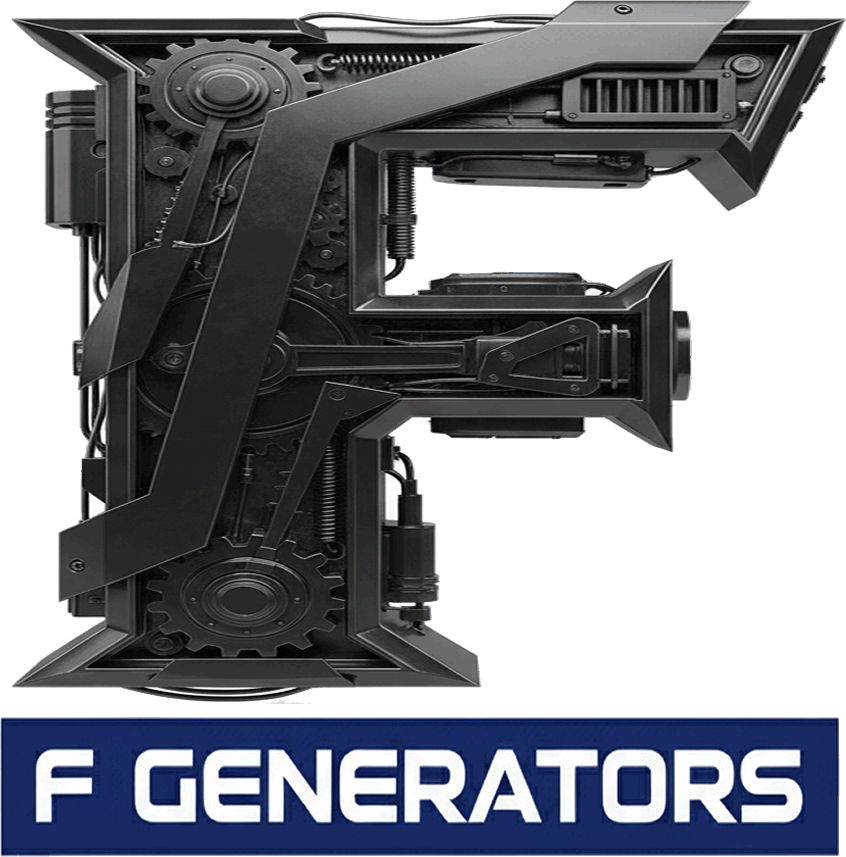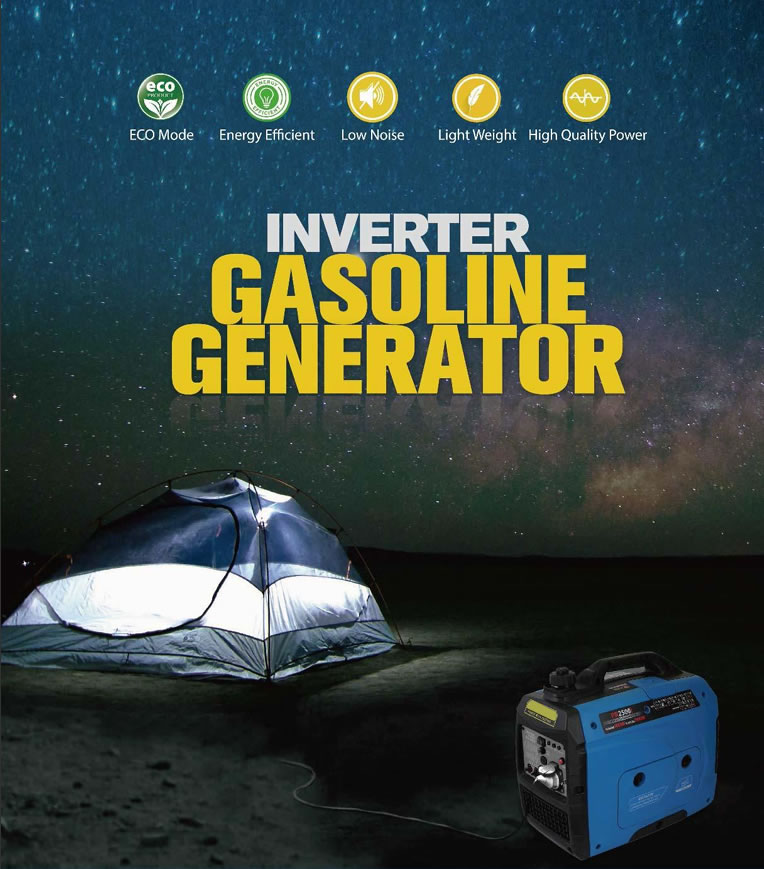The 2026 Power Dilemma: Is the Future of the Portable Generator more of a Quiet and Fuel-Efficient inverter type, or Rugged and Conventional?

The air crackles with an unseen tension. The lights flicker, holding on for a desperate second before plunging the world into a disorienting, inky blackness. For decades, what happened next was a foregone conclusion, a Pavlovian response to the failure of the grid. First, a moment of silence, then the frantic scramble, the pull of a cord, and finally, the bone-rattling, neighborhood-waking roar of a conventional generator kicking to life.
It was the sound of relief, yes, but it was a brute-force solution from a bygone era. A loud, dirty, inefficient beast bellowing its defiance into the night. It was the sound of compromise.
That sound, that thunderous roar, is the anthem of a dying empire.
We stand on the cusp of 2026, and a fundamental shift is coursing through the marketplace. This change isn’t being dictated from our factories or engineering labs; it’s a groundswell rising from the hearts and minds of our customers. They are no longer just buying a box that makes electricity. They are investing in peace, in security, in intelligence, in a seamless continuation of their modern lives. They are consciously choosing a different sound: the gentle, civilized hum of an inverter generator. And if your business isn’t attuned to this frequency, you are about to be left in a profound and permanent silence.
This isn’t a fleeting trend. It is a mandate, delivered with the clarity of a ringing bell. The inverter vs conventional generator debate is, for the discerning customer, already over. The verdict is in. Here’s a deep dive into why, and a look at the new world of power your customers are demanding right now.
The Demand for Silence: The New Sound of Power
Noise is a tax on our sanity. For years, customers paid it willingly because there was no alternative. Today, they refuse. The demand for a quiet generator has transcended being a feature; it is the number one emotional driver in purchasing decisions, and the reasons are woven into the very fabric of modern life.
The Sanctity of the Home Office: The rise of remote work has transformed homes into hubs of commerce and creativity. Imagine a consultant in the middle of a multi-million-dollar video pitch to a client. The power cuts out. The old solution? A mad dash to the garage to fire up a machine so loud it sounds like a lawnmower is tearing through the living room, forcing an apologetic, unprofessional end to the meeting. The 2026 solution? An inverter, perhaps housed in a weatherproof enclosure, kicks in so quietly that the professional on the other end of the call is none the wiser. The hum is a background noise, not a seismic event. This isn’t convenience; it’s career insurance.
The Unspoiled Escape: Consider the modern family seeking refuge in nature. They’ve invested in gear to escape the noise of the city, to hear the whisper of the wind through the pines and the crackle of a campfire. A conventional generator doesn’t just power their campsite; it lays siege to it. It erects an invisible wall of sound, isolating them and antagonizing every other camper within a half-mile radius. An inverter, by contrast, integrates. It respects the environment it’s in. The whisper-quiet operation of models from pioneers like FFT POWER has completely redefined the generator for camping, turning it from a necessary evil into a welcome companion, powering a string of lights or a coffee maker without shattering the peace it was purchased to enhance.
The Considerate Neighbor: In an era of zero-lot-line homes and denser communities, a regional power outage is a shared experience. The roar of a single conventional generator can become a source of profound neighborhood resentment. But the owner of a quiet inverter becomes a hero. They can keep their lights on, their freezer cold, and even run a cord to a neighbor to power a vital medical device, all without contributing to the chaos and stress of the situation. This social contract is a powerful, unspoken force in the market.
The technology behind this silence is a testament to brilliant engineering. Unlike conventional units locked at a frantic 3600 RPM, inverters use sophisticated electronics to vary engine speed based on the load. This, combined with advanced, sound-dampening enclosures and smaller, more efficient engines, cuts noise levels by more than half. The difference isn’t just a number on a spec sheet; it’s the chasm between a jarring intrusion and a gentle hum of assurance.
The Unseen Shield: Protecting the Fragile Digital Ecosystem
We used to power simple things: work lights with resilient filaments, refrigerators with basic compressors. Now, we power our entire digital lives. The inventory of a modern home is a catalog of sensitive microprocessors: laptops, 4K OLED smart TVs, mesh Wi-Fi systems, gaming consoles, smart home hubs, even the circuit boards in our refrigerators and washing machines. These aren’t just gadgets; they are fragile, sophisticated windows to the world, and they are incredibly vulnerable.
A conventional generator, with its mechanically regulated engine, produces what engineers call “dirty power,” characterized by a high Total Harmonic Distortion (THD). Imagine trying to fill a crystal-clear glass of water from a firehose pumping muddy, debris-filled water. The sheer force might fill the glass, but the contents will be corrupted, and the glass itself might crack under the strain. This is what dirty power does to your electronics. It introduces voltage spikes and fluctuations that degrade and destroy sensitive components over time.
This is where the inverter emerges as a silent, indispensable guardian. It performs a kind of digital alchemy. It takes the raw, unstable AC power from the alternator, uses a rectifier to convert it into clean DC power, and then employs an inverter to pulse it back into a perfect, clean AC sine wave. The result is a stream of pure, stable, clean power for electronics—often significantly cleaner and more reliable than what comes from the utility grid itself.
Your customer may not understand the term “sine wave,” but they viscerally understand the gut-wrenching, wallet-draining pain of a fried motherboard on their work laptop or a destroyed home theater system. When you explain that an inverter generator from a trusted name like F Generators is a personal power plant with a built-in surge protector, you’re not just selling a feature. You’re selling a profound sense of security for their entire digital life. You are offering them a shield.
The Smart Engine: A Revolution in Fuel Efficiency and Sustainability
The old way was defined by brute force. A conventional generator’s engine had one speed: full throttle. It screamed along at 3600 RPM whether it was powering a single 60-watt lightbulb or an entire kitchen. The fuel gauge needle would visibly drop. It was the gas-guzzler of the power world.
In an age of volatile fuel prices and heightened environmental awareness, this blatant inefficiency is no longer acceptable. A fuel efficient generator has moved from the “nice-to-have” column to being a critical financial and ethical consideration for every customer.
The inverter’s core intelligence—its ability to throttle down and match its output to the exact load required—is a revolutionary leap. It sips fuel when the demand is low, and only ramps up when necessary. Let’s translate this into real-world value:
- Extended Runtimes: A conventional 5000-watt generator might burn through its 5-gallon fuel tank in 8-10 hours, regardless of the load. A best-in-class inverter like a model from the FF-T series, under a typical 25% load, could run for 15, 18, or even 20 hours on a significantly smaller tank of fuel. During an extended blackout, this means the difference between sleeping through the night and having to venture out into a dark, potentially hazardous yard to refuel.
- Long-Term ROI: While inverters often have a higher initial purchase price, the fuel savings create a compelling return on investment. For a contractor running power tools all day, or a food truck operator powering their business, these savings can pay back the initial price difference in as little as a year. You are selling them a machine that pays for itself.
- Environmental Responsibility: Less fuel burned means a smaller carbon footprint. For a growing segment of the population, particularly younger buyers, making an ecologically responsible choice is a powerful motivator. The inverter aligns with a worldview of working smarter, not harder, and of respecting our planet’s resources.
The Freedom Machine: Power That Goes Where Life Happens
Look at the form factor of a traditional 5000+ watt generator. It’s a behemoth of steel tubing, a heavy, unwieldy cage on wheels. It’s a stationary beast, an immovable object designed to sit in a garage and wait for disaster. But modern life is not stationary; it’s dynamic and mobile.
The modern portable generator is an indispensable tool for living an untethered life. The elegant engineering of an inverter, which masterfully integrates the engine and the alternator into a single, compact unit, results in a dramatically smaller and lighter package. This isn’t an incremental improvement; it’s a categorical leap that redefines the very purpose of a generator.
Your customers want to grab power and go. They crave:
- The Weekend Adventure: The ability for one person to easily lift the generator into the back of an SUV or boat. It’s for the family powering a projector for an outdoor movie night, or the fisherman running electronics on the water.
- The Mobile Business: For the food truck entrepreneur, the mobile pet groomer, or the event photographer, a quiet, lightweight, and reliable inverter is not a tool; it’s the heart of their livelihood. Its portability unlocks new locations and opportunities.
- The Empowered DIYer: The homeowner working on a fence at the far end of their property doesn’t want to daisy-chain four extension cords together. They want to carry their power source directly to the job site.
- The Unbeatable Tailgate: Today’s tailgating parties are sophisticated events with slow cookers, speakers, and flat-screen TVs. The go-anywhere ruggedness and easy portability of a unit like a KING KONG POWER generator make it the undisputed MVP of the parking lot.
This evolution from a static emergency box to a dynamic lifestyle enabler is perhaps the most profound shift of all. The inverter’s design doesn’t just make it more portable; it fundamentally reimagines what a generator is for. It’s no longer just for emergencies; it’s for ambitions, adventures, and opportunities.
The final verdict for 2026 and beyond is already being written, not by manufacturers, but by the undeniable demands of a smarter, more sophisticated, and more mobile customer. They demand the peace of silence. They demand the absolute protection of clean power. They demand the economic and ecological intelligence of fuel efficiency. And they demand the untethered freedom of true portability.
The conventional generator, a relic of a louder, less-demanding time, fails on every single one of these modern mandates. The inverter generator is the clear, definitive, and solitary answer.
The question is no longer if your customers will make this choice, but whether you will be the one to guide them. The future of power doesn’t have a roar; it has a confident, civilized hum. And it is more powerful than ever.

